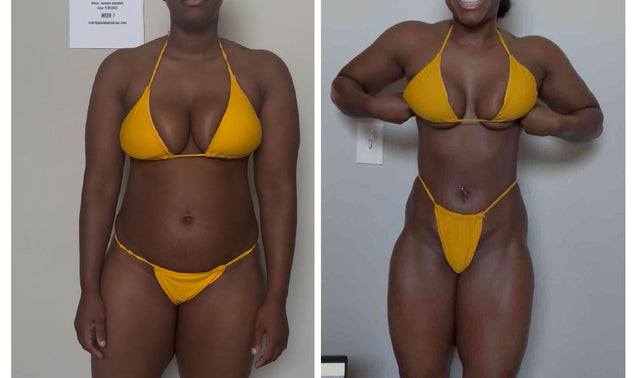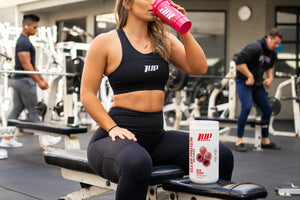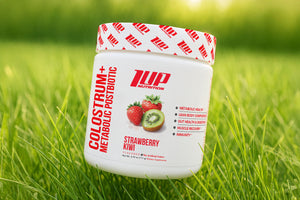We’ve all experienced it before -- the sudden, intense, painful (and involuntary) contraction of a muscle that leaves us hobbling, limping, and wiggling to find a modicum relief.
These involuntary contractions are more commonly known as muscle cramps. They can hit any major (or minor) muscle of the body, but the most frequent occurrences of cramps occur in the calves, shines, and lower back.
As annoying and painful as muscle cramps can be, there are steps you can take to stop them from happening or help them subside faster.
Today, we discuss 4 tips to stop muscle cramps quickly.
Let’s first start by discussing some of the most common causes of muscle cramps.
What Causes Muscle Cramps?
There are several causes why a muscle cramps.[1]
Dehydration
The most common cause of muscle cramps in physically active individuals is dehydration.
Dehydration occurs as a result is the excessive loss of fluids and essential electrolytes in the body.
Electrolytes are minerals in your body that carry an electric charge, and they play key roles in fluid balance, muscle function, blood pH, and nutrient delivery.
Low levels of any one of the following minerals may cause muscle cramps:
- Sodium
- Potassium
- Calcium
- Magnesium
The two most common electrolyte deficiencies linked to muscle cramps are potassium and magnesium as these two minerals are responsible for helping tissues relax.[2,3]
Overuse
Some muscle cramps result from overuse. This typically occurs as a result of training a specific muscle (or group of muscles) with a high amount of volume and/or intensity and not giving it sufficient time to recover.
Most often muscle cramps due to overuse occur during exercise, though it is possible for them to happen other times outside of your training window.
Poor Circulation
Reduced blood flow to a muscle group can also cause cramps. This decrease in circulation can occur from narrowing of the arteries when blood is shunted from one region of the body to another or as a result of atherosclerosis.
Nerve Compression
Nerves innervate muscles, which means the brain sends a signal to a particular nerve, and in turn the muscle contracts.
When nerves become pinched, these lines of communication become compromised, which can lead to the involuntary firing of a muscle.
A common example of this occurs with spinal nerve compression, which can lead to muscle cramps in your legs when standing or walking.
Other Causes
Less common causes of muscle cramps include:
- Pregnancy
- Hypothyroidism
- Alcoholism
- Kidney Failure
Now, let’s look at 4 ways to stop muscle cramps quickly!
Top 4 Tips to Stop Muscle Cramps Quickly
Hydrate!
Seeing as one of the most common causes of muscle cramps in individuals (especially physically active ones) is dehydration, it makes perfect sense that one of the best ways to prevent or combat muscle cramps is to stay properly hydrated at all times.
Staying hydrated doesn’t just mean drinking enough water (though that is important), you also need to make sure you’re replenishing essential electrolytes, including sodium, potassium, magnesium, and calcium.
These charged minerals help maintain and regulate fluid balance in the body and serve an essential role in supporting hydration.
Warm Up & Cool Down
As tempting as it can be to jump straight into our workouts and get on with our lives the instant the final rep is complete, it’s important to properly warm up before and cool down after your workout.
The reason for this is that failure to do either one of these can result in a muscle cramp, spasm, or strain.
Simply taking a few minutes at the beginning of your workout to perform a dynamic warm up and/or foam rolling can help increase blood flow and prime the muscles before their more intense efforts to come.
Likewise, spending just a few minutes to stretch following a hard workout can prevent muscle from cramping in the hours following training.
Check Your Diet
Increasing your intake of electrolyte-rich foods, particularly potassium, calcium, and magnesium, is one of the best ways to stop muscle cramps.
We all tend to get enough sodium in our diets, but many individuals struggle to get in sufficient quantities of the other three major electrolytes.
Some of our favorite food sources for these mineral-rich foods are:
- Bananas
- Potatoes
- Dairy
- Spinach
- Kale
- Nuts
- Seeds
- Avocado
- Salmon
- Legumes
Supplement Smart!
In addition to consuming enough electrolytes through whole food sources, you can also supplement your electrolyte intake with a multivitamin/multimineral complex, such as 1UP Multi-Go Men or Multi-Go Women.
Multivitamins supply a comprehensive range of essential vitamins and minerals, including magnesium, potassium, the B family of vitamins as well as vitamin C, vitamin D, and vitamin E.
You can also look to improve your electrolyte intake around your training window by using an electrolyte-rich intra workout or post workout supplement, such as 1UP Sport Amino or Pure Rebuild.
What Do I Do if I’m Cramping Right Now?
The first thing you should do is start drinking some fluids and electrolytes to help replenish those depleted mineral and water stores.
Next, try lightly stretching the cramped muscle, massaging it, or trying self-myofascial with a foam roller, thera gun, or lacrosse ball.
Finally, do some inventory on your diet and see how your intake of electrolyte-rich foods is. Consuming a wide variety of fruits, veggies, whole, grains, and lean proteins will help keep your mineral and electrolyte stores up to snuff, thereby helping to prevent future muscle cramps.
Takeaway
We all deal with muscle cramps.
The best way to stop muscle cramps from happening is prevention -- eating a healthy diet rich in essential minerals, vitamins, and electrolytes as well as consuming enough water each day.
Properly warming up before and cooling down after your workout can also help mitigate the onset of cramps brought on by intense exercise.
Last, but not least, you can alway supplement your diet with additional electrolytes in the form of a multivitamin, intra workout, recovery supplement, or whey protein powder (which naturally contains essential electrolytes like calcium.
Try these tips out and see if you can put a stop to muscle cramps once and for all!
References
- Bordoni B, Sugumar K, Varacallo M. Muscle Cramps. [Updated 2020 Mar 15]. In: StatPearls [Internet]. Treasure Island (FL): StatPearls Publishing; 2020 Jan-. Available from: https://www.ncbi.nlm.nih.gov/books/NBK499895/
- Rude RK. Magnesium. In: Ross AC, Caballero B, Cousins RJ, Tucker KL, Ziegler TR, eds. Modern Nutrition in Health and Disease. 11th ed. Baltimore, Mass: Lippincott Williams & Wilkins; 2012:159-75.
- Kowey P.R. (2002) The Role of Potassium. In: Lobo R.A., Crosignani P.G., Paoletti R., Bruschi F. (eds) Women’s Health and Menopause. Medical Science Symposia Series, vol 17. Springer, Boston, MA






